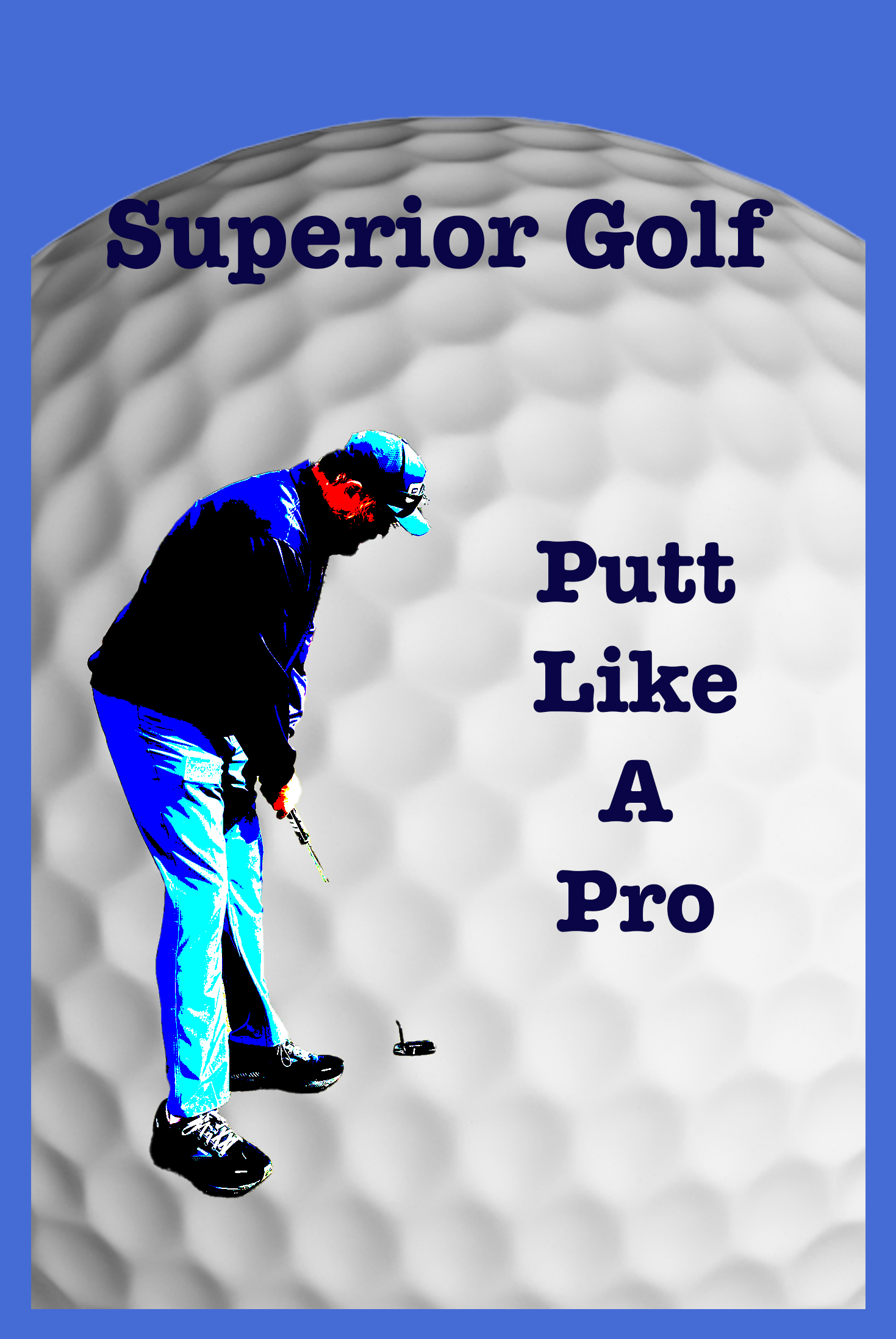Proper Putting Grip: Imagine you’re standing on the lush, green course, putter in hand. Your eyes are locked on the goal ahead. This putt could change the game. Mastering your putting technique means nailing the fundamentals of a proper putting grip, not just practicing for hours.
Golf legends like Tiger Woods and Rory McIlroy1 swear by the traditional grip. This grip places it in the palms, not fingers. This grip leads to a smoother, hands-free swing1. By using a reverse overlap, you’ll keep a light, controlled grip2
Customizing your grip to fit your style is crucial. A stable stance and balanced setup are the first steps to success1. The right putter should feel good in your hands and give you confidence. With the right hand position, a confident, consistent technique is within reach.
Key Takeaways
- Begin with the traditional right-hand-below-left grip for a proper putting grip.
- Place the grip in the palms for a hands-free pendulum motion.
- Use a reverse overlap to maintain light grip pressure and controlled stroke.
- Ensure your putter boosts your confidence and fits your style.
- Adopt a balanced putting setup and a stable stance for optimal performance.
Understanding the Key Elements of a Proper Putting Grip
A proper putting grip helps you maintain control and achieve consistent strokes. There are various grips, each with unique benefits for hand action and keeping the putter face square. We’ll look into three popular grips and their advantages now.
The Conventional Grip
The conventional grip feels natural and is similar to how you hold irons and woods. It locks your hands, promoting a pendulum motion with palms facing up. Golfers often choose traditional grips like the interlocking, overlapping, or ten-finger grips. These align with the basic principles2.
Watching pros who use interlocking or overlapping grips can offer valuable tips2. To ensure a consistent stroke, the grip should extend up the leading arm. This positioning helps align the shoulders squarely3.
The Claw Grip
The claw grip, known for reducing hand action and yips risk, keeps the putter face stable during strokes. It is especially good for golfers who struggle with too much wrist movement. This grip ensures better control and accuracy2.
Drills like “palm-to-palm” and “tee-in-glove” improve this grip’s stability2. A thicker grip also helps by limiting wrist action, leading to smoother putting strokes2.
The Left-Hand-Low Grip
The left-hand-low grip, also called cross-handed, places the left hand below the right. This reduces wrist action and promotes a consistent stroke. Famous golfer Jordan Spieth uses this technique to keep his joint movements in check and maintain a square putter face3.
Choosing the right grip pressure and equipment size is vital for the correct feel and putting motion. This grip style ensures the putter’s shaft aligns up the lead arm, improving your stroke path3 and2.
Different grips control and feel differently. Picking the right one can boost your confidence and consistency on the green.
Putting Grip Variations and Their Impact
The grip you pick matters a lot in your putting game. It impacts your control, consistency, and how comfortable you feel. Different grips work better for various people, helping them succeed in putting.
The Pencil Grip
The pencil grip is all about a gentle touch. It uses your big muscles for control, making your stroke smooth and stable. This grip keeps the putter steady, helping you find the right balance when you set up to putt.
The Saw Grip
The saw grip helps you swing straight back and forth, with less curve. It’s good for golfers who like a lighter touch and a straight shot to the hole. This grip is for those who want to keep their hands light and stay balanced. Many players adjust grips, like the Palmbird Putter Grip, to make it comfortable4.
The Armlock Grip
The armlock grip stops your left wrist from bending too much and makes the putter face less angled. You might need to change where you place the ball or the angle of your putter. This grip uses longer putters, making your stance more stable while following the rules. It helps you keep a light touch throughout the swing5.
Oversize Putter Grips
Oversize putter grips suit a different way of holding, like using two thumbs, which keeps your shoulders even and helps you swing like a pendulum. This is great for light touch, control, and smooth play, especially on fast greens6. Grips like the Palmbird Putter Grip let golfers try out what works best for them, improving comfort and how well they play4.
The table below shows the unique features and how pros use different putting grip styles:
| Grip Style | Description | Professional Usage |
|---|---|---|
| Pencil Grip | Light touch, utilizes core muscles | – |
| Saw Grip | Straight pendulum motion | Claw and Saw styles with Palmbird |
| Armlock Grip | Minimizes left wrist breakdown | Used with longer putters |
| Oversize Grip | Two-thumb grip, leveled shoulder | Popular for fast greens |
Choosing the Right Putting Grip for Consistent Results
Finding the right putting grip is key to improving your stroke and building confidence. It’s crucial to try out various grips to see which fits best. Consider your hand size, how flexible your wrists are, and your natural tendencies.
Exploring different grip styles is essential. Experts like Tiger Woods and Rory McIlroy prefer the conventional grip. They use a reverse overlap technique for better stability and control5. The claw grip, used by Phil Mickelson and Sergio Garcia, reduces wrist movement for a steady putter face5.
The left-hand-low grip is another choice, liked by Jordan Spieth and Dustin Johnson. It lessens wrist movement for a steady stroke5. Then there’s the armlock grip, chosen by Bryson DeChambeau and Matt Kuchar. It’s great for keeping the left wrist firm, within USGA rules for putter grip size5.
Your unique physical features and play style should guide your grip choice. Try different grips and maybe get some expert advice. This way, you’ll find a grip that suits your mechanics, leading to a better and more consistent putt. For more on putting grips, check out this detailed guide.
Conclusion
Mastering the right putting grip is key for golfers aiming to excel. Exploring grips like the conventional, claw, and left-hand-low helps understand their impact on your putting. These grips aim for a correctly aligned putter face and a smooth stroke, crucial for good performance. In the past two winters, an analysis of 5,500 putts provided deep insights into these techniques7.
The reverse overlap grip is a top choice among professional players. It’s known for its consistent and stable stroke7. Golfers trying out different grips noticed that the reverse overlap improves their putting7. Adopting this grip or finding another that fits can lead to a more assured putting technique.
Choosing the right grip variation lets you keep a light touch and a steady position. Whether it’s the pencil, saw, armlock, or oversize grips, the right one aids in a smooth putt. As you try these out, you’ll find a stroke you can rely on. This builds your confidence and skill in golf. For more tips on improving your game, check out “putting basics“.
FAQ
What are the fundamentals of a proper putting grip?
How does the conventional grip contribute to a consistent putting stroke?
What is the claw grip and how does it help stabilize the putter face?
What advantages does the left-hand-low grip offer?
How does the pencil grip affect putting performance?
What is the saw grip and who can benefit from it?
How does the armlock grip contribute to a balanced putting setup?
Why might golfers choose oversize putter grips?
How can experimentation help in finding the proper putting grip?
Source Links
- https://www.golfmonthly.com/tips/how-to-grip-a-putter-244797
- https://pinsandaces.com/blogs/news/best-putting-grip
- https://meandmygolf.com/golf-tips/putting-tips/the-3-most-important-parts-of-a-putting-grip/
- https://palmbirdputtergrips.com/different-putting-grip-styles/
- https://primeputt.com/blogs/golf/putting-grip-styles
- https://superstrokeusa.com/blogs/blog/which-putting-grip-style-is-right-for-you
- https://oldduffergolf.com/putting-basics/

